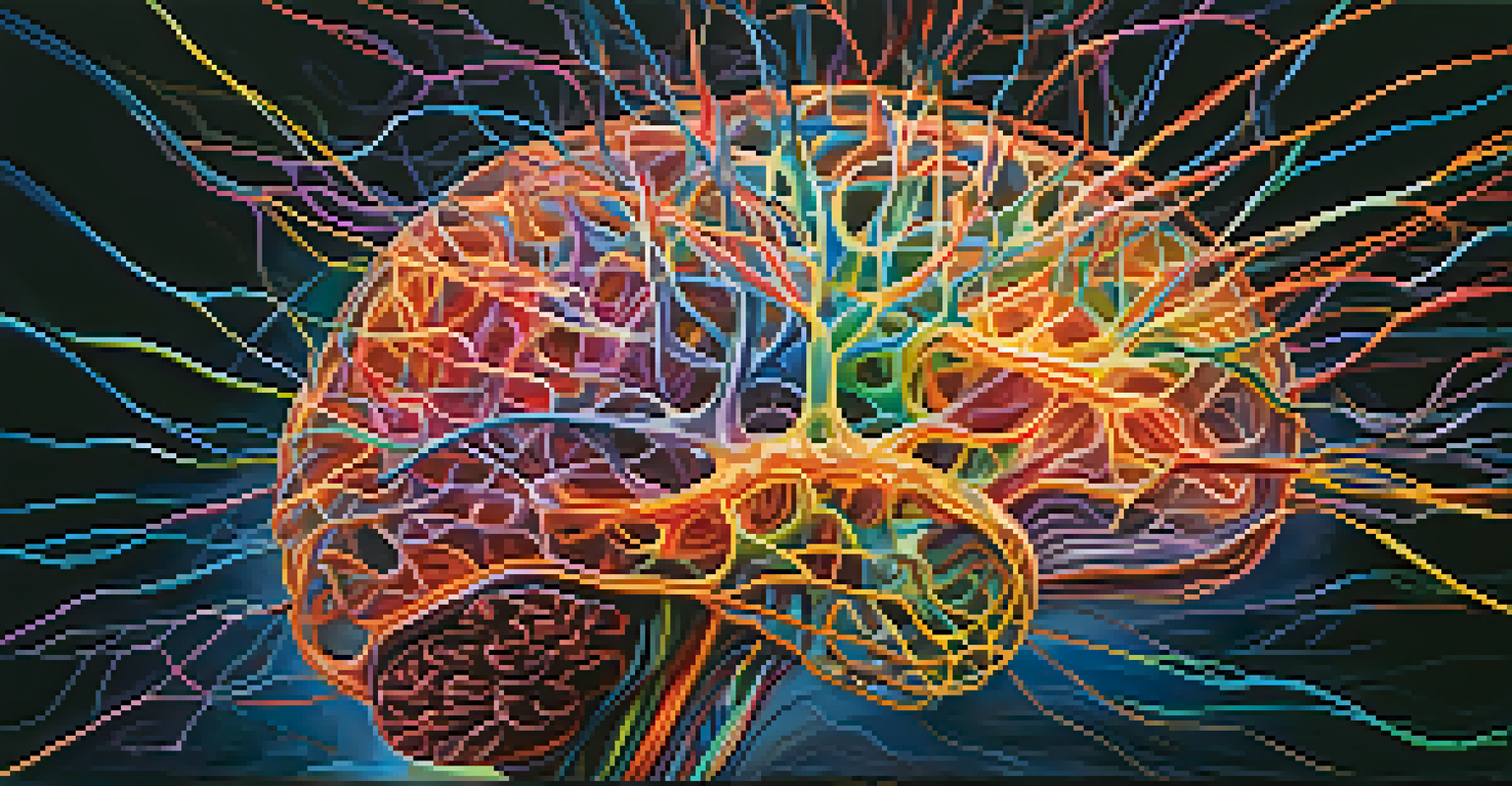The Neuroscience Behind Hallucinogens and Cognitive Functioning

Understanding Hallucinogens: What Are They?
Hallucinogens are substances that alter perception, mood, and various cognitive processes. Common examples include psilocybin, LSD, and mescaline. These compounds can induce experiences that are often described as mystical or profound, leading to a greater interest in their effects on the human brain.
The use of hallucinogens can catalyze profound shifts in perception, leading to insights that may not be accessible in ordinary states of consciousness.
The effects of hallucinogens can vary widely depending on the specific substance, the dosage, and the user's mindset. While some people may experience vivid visual distortions, others report heightened emotional sensitivity or changes in thought patterns. This variability makes hallucinogens a fascinating subject for neuroscientific research.
Understanding how these substances interact with the brain's neurotransmitters, particularly serotonin, provides insight into their profound effects on cognition and perception. This interaction is key to unlocking the mysteries of how hallucinogens can reshape our understanding of consciousness.
The Brain Under the Influence: Neurological Changes
When hallucinogens are ingested, they primarily affect the brain's serotonin receptors, which play a vital role in mood and perception. These changes can lead to significant alterations in sensory perception and emotional responses. For example, users may experience enhanced colors or sounds, creating a sense of interconnectedness with their environment.

Research using brain imaging techniques, such as fMRI, has shown that hallucinogens can cause increased connectivity between different brain regions. This heightened communication can lead to unusual thought patterns and perceptions, sometimes resulting in what users describe as 'mind-expanding' experiences.
Hallucinogens Alter Perception
Hallucinogens significantly impact mood and perception by interacting with the brain's serotonin receptors.
Moreover, the changes in brain activity during hallucinogen use suggest potential therapeutic applications. For instance, studies have indicated that these substances may help alleviate anxiety, depression, and addiction by promoting new neural pathways and perspectives.
Cognitive Functioning: How Hallucinogens Play a Role
Cognitive functioning encompasses various mental processes, including attention, memory, and decision-making. Hallucinogens can have both enhancing and impairing effects on these functions, depending on the individual and context. Some users report increased creativity and problem-solving abilities, while others may struggle with attention or focus.
Psychedelics can help us see the world in a new way, breaking down the barriers that we build around our own minds.
One intriguing aspect of hallucinogens is their ability to disrupt normal patterns of thinking. This disruption can lead to novel connections and insights that might not surface during ordinary states of consciousness. For instance, artists and musicians often cite hallucinogens as catalysts for their creative processes.
However, it's important to note that the cognitive effects can be unpredictable. While some may find clarity and inspiration, others might experience confusion or anxiety. This duality highlights the complexity of how hallucinogens interact with our cognitive faculties.
Therapeutic Potential: Healing the Mind with Hallucinogens
Recent research has sparked renewed interest in the therapeutic potential of hallucinogens. Studies suggest that substances like psilocybin and MDMA can be effective in treating conditions such as PTSD, depression, and anxiety. This emerging field of study points towards a shift in how we view these substances, from taboo to treatment.
By facilitating profound emotional experiences, hallucinogens may help patients confront and process difficult memories or traumas. This therapeutic approach is often described as a 'reset' for the mind, allowing individuals to break free from entrenched patterns of thought and behavior.
Therapeutic Uses Are Emerging
Research indicates that substances like psilocybin and MDMA may effectively treat mental health conditions such as PTSD and depression.
Ongoing clinical trials are exploring the mechanisms behind these effects, aiming to better understand how hallucinogens can be safely integrated into therapeutic settings. As the stigma surrounding these substances fades, the potential for healing becomes increasingly recognized.
The Risks and Considerations of Hallucinogen Use
Despite the promising therapeutic benefits, hallucinogens come with risks that should not be overlooked. For some individuals, particularly those with a history of mental health disorders, hallucinogen use can trigger or exacerbate psychological issues. Understanding these risks is crucial for anyone considering their use.
Additionally, the context in which hallucinogens are taken plays a significant role in the overall experience. Factors such as setting, dosage, and mental state can greatly influence whether the experience is positive or negative. Therefore, it’s essential to approach these substances with caution and respect.
Education and harm reduction strategies are vital for minimizing potential dangers associated with hallucinogen use. Providing accurate information and support can help individuals make informed choices, leading to safer experiences.
Cultural Perspectives: Hallucinogens Throughout History
Hallucinogens have been used for centuries across various cultures for spiritual and healing purposes. Indigenous communities often utilize these substances in rituals and ceremonies, viewing them as gateways to deeper understanding and connection with the universe. This rich history adds another layer to our understanding of their effects.
As societies evolve, so too do the perceptions of hallucinogens. In the 1960s, they became associated with counterculture movements, leading to both fascination and fear. Today, as more research emerges highlighting their potential benefits, there is a growing movement to reclaim their place in modern medicine and spirituality.
Cultural Context Matters
The historical and cultural use of hallucinogens in rituals highlights their potential benefits and the evolving perceptions surrounding them.
Understanding these cultural contexts is essential for grasping the full impact of hallucinogens on cognitive functioning and mental health. By recognizing their historical significance, we can better appreciate their potential role in contemporary society.
The Future of Hallucinogens in Neuroscience Research
The field of neuroscience is on the brink of a revolution regarding hallucinogens and their effects on cognition. As research expands, scientists are uncovering new insights that challenge traditional beliefs about the human brain and consciousness. This ongoing exploration promises to reshape our understanding of mental health and therapeutic practices.
Future studies are likely to focus on the long-term effects of hallucinogen use, both in therapeutic settings and recreational contexts. By investigating how these substances can promote neuroplasticity—the brain's ability to reorganize itself—researchers hope to unlock new avenues for treatment.

As societal perceptions continue to shift, the dialogue surrounding hallucinogens will likely evolve. By fostering open discussions about their benefits and risks, we can pave the way for informed decisions and innovative approaches to mental health care.